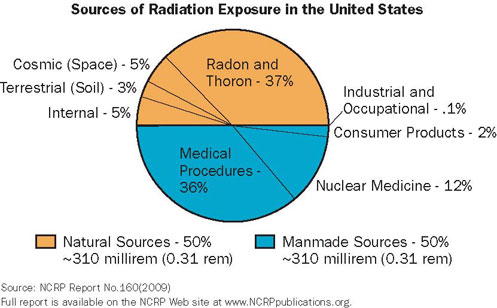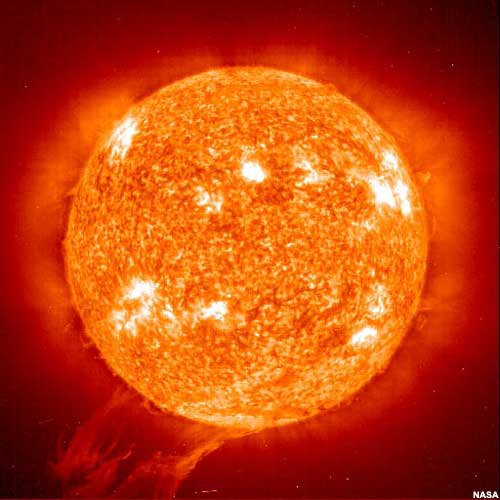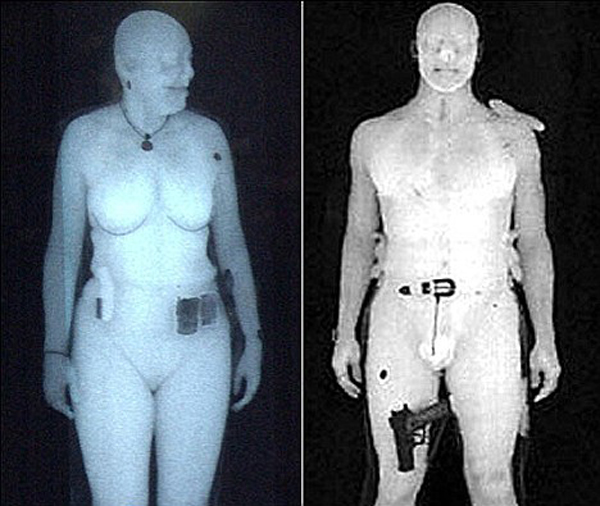5 Everyday Things That Are Radioactive
Intro

The average American is exposed about 620 millirem (mrem) of radiation each year, according to the United States Nuclear Regulatory Commission. This radiation comes from both natural and man-made sources.
Half of our yearly dose comes from natural "background radiation" present in the environment. Most of this comes from radon (an odorless, colorless, gas naturally occurring in the air), and smaller amounts come from cosmic rays and the Earth itself, according to the USNRC.
The other half of person's radiation dose comes from man-made sources, which can be medical, commercial or industrial, but medical procedures typically account for 96 percent of a person's man-made radiation exposure, according to the USNRC.
"In general, a yearly dose of 620 millirem from all radiation sources has not been shown to cause humans any harm," according to the USNRC.
So just what around us is contributing to our yearly radiation dose?
Food

All plants and animals contain trace amounts of radioactive potassium-40 and radium-226. In fact, all water contains dissolved radioactive uranium and thorium, according to the USNRC.
However, these amounts are very small. All the food and drink a person ingests over a year add up to about 30 mrem.
The sun

While Earth's atmosphere does a good job of protecting us from the continuous stream of cosmic radiation striking the planet from the sun and stars, some radiation gets through.
Where a person lives determines the amount of cosmic radiation they are exposed to, as differences in elevation, atmospheric conditions and Earth's magnetic field can alter radiation dosage.
For example, a person living in mile-high Denver gets more than 50 mrem every year, compared with the 26 mrem that a resident of sea-level Key West, Fla., gets, according to the Centers for Disease Control and Prevention. Denver's higher altitude means thinner air, which makes it easier for the sun's UV rays to get through.
Air travel

High altitudes are also to blame for exposure to cosmic radiation during flights. How much radiation is absorbed during a flight depends on the plane's altitude and latitude, and on solar activity.
For a typical cross-country flight in a commercial airplane, a person receives 2 to 5 mrem, less than half the dose received during a chest X-ray (10 mrem), according to U.S Environmental Protection Agency.
In addition, a person receives about 0.002 mrem from airport security scans each way, according to the EPA.
Cell phones

Threats to health from cell phone radiation have been a persistent, though scientifically uncertain, concern for years now. Last June, San Francisco voted to become the first U.S. city in which retailers must display the radiation levels emitted by cell phones.
"We are not suggesting people abandon cell phones we certainly wouldn't but we suggest that people use cell phones differently by using headsets, and that they buy low-radiation cell phones," Olga Naidenko, a senior scientist at the Environmental Working Group (EWG), told TechNewsDaily, a sister site of Life's Little Mysteries.
Cell phones, as well as radio towers and Wi-Fi networks, emit radio frequency waves, which are absorbed by human tissue and measured using the Specific Absorption Rates (SARs) scale. [Read: Which Five Phones Have the Lowest Radiation Levels?]
Medical x-rays

Because medical procedures make up 96 percent of the average person's exposure to man-made radiation, people should limit the number and types of x-rays they receive. X-ray, mammography and CT (Computerized Axial Tomography or CAT Scan) machines all increase a person's dose.
A chest X-ray typically delivers a dose of about 10 mrem, while a full-body CT scan packs a 1,000-mrem punch, according to the USNRC. By comparison, a CT scan of the chest delivers 700 mrem, while a scan of the head gives 200 mrem. A dental x-ray gives 1.5 mrem, and an x-ray of a hand or foot delivers 0.5 mrem.
Sign up for the Live Science daily newsletter now
Get the world’s most fascinating discoveries delivered straight to your inbox.










